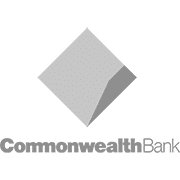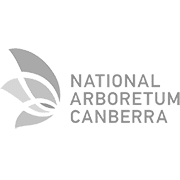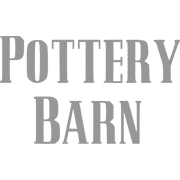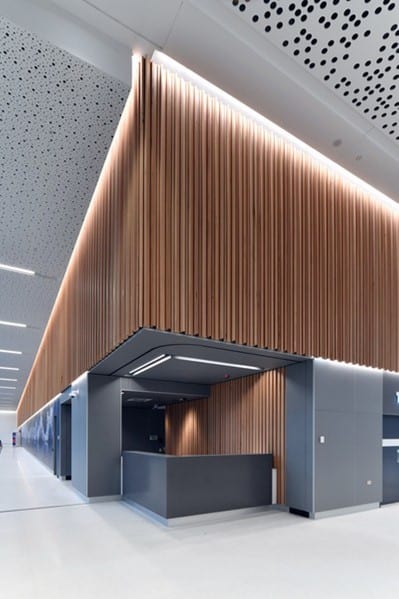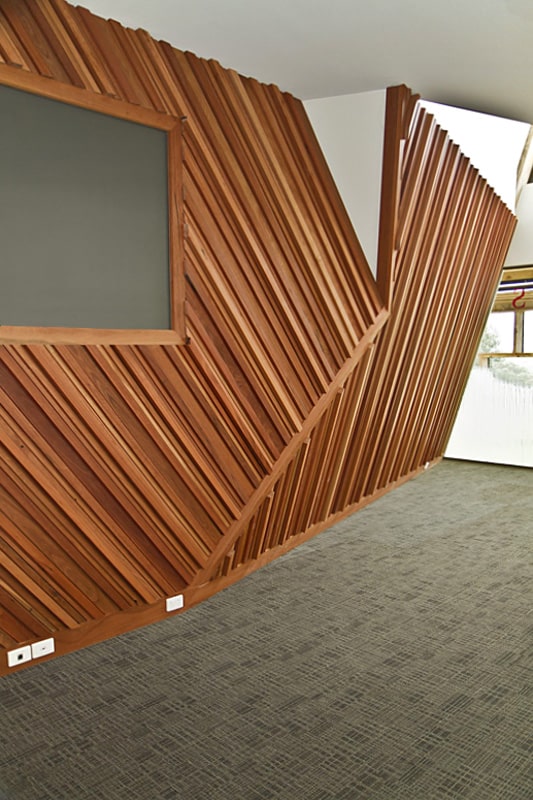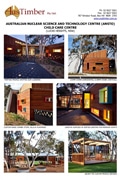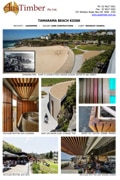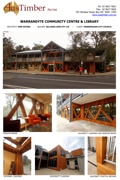Timber Cladding And Lining
Click on thumbnails to view larger image / project page (.pdf)
What is Timber Cladding?
In construction and infrastructure development, timber cladding refers to the process of covering the walls of a structure with wooden boards and panels. This can be done on the interior as well as the exterior sides. The technique serves an aesthetic purpose and provides thermal insulation and protection against weather changes as well.
History and Growing Popularity of Timber Cladding
The process of timber cladding dates back to old wood constructions in Scandinavia and Japan. In today’s modern world, this process is gaining widespread popularity due to the natural beauty, versatility, and sustainability that timber cladding offers. Architects integrate timber cladding into their numerous residential and commercial building projects to combine natural aesthetics and modernity in their designs.
Aesthetic and Environmental Advantages
Cladding manufactured out of timber offers infrastructure a warm and natural feel that can be tailored to different architectural styles. Also, as wood is a renewable natural resource as compared to the rest of the construction materials, timber cladding is a great option in terms of sustainability.
Different Types of Timber Cladding
Softwood Cladding
- Spruce: Spruce is a preferred option due to its light colour and fine texture. Due to the material’s cost-effectiveness and easy-to-work-with features, it has become a popular choice for projects with limited budgets.
- Pine: Pine cladding, which is versatile as well as widely available, can be used to enhance its durability and resistance to decay.
- Larch: Larch makes an excellent choice for external cladding owing to its durability and resistance to decay. The material’s rich, warm tones and fine grains offer an aesthetically appealing look and feel.
Hardwood Cladding
- Western Red Cedar: Popular for its natural resistance to both insects and decay, western red cedar makes an ideal choice for many wood applications, such as outdoor furniture or other items that are required to be durable. It comes in rich shades ranging from light amber to deep honey brown.
- Oak: The hardwood oak cladding is admired for its strength and unique grain texture.
- Iroko: Iroko, commonly called “African teak,” is a hardwood that is both durable and attractive, having an exotic feel. Its colour is golden brown and deepens with time.
Modified Wood Cladding
- Thermally Modified Wood: The wood has been thermally treated so as to increase its durability and stability, thereby rendering it less susceptible to insects and moisture damage.
- Acetylated Wood: A kind of chemical treatment process that enhances the durability and stability of wood, making it an ideal choice for cladding in adverse environments.
How to Select the Right Timber Species for Your Projects
When selecting the right timber for your construction projects, it is crucial to consider the weather, the surrounding environment, and the look you wish to create. For example, oak trees are known for their strength, whereas spruce trees offer cost-effective softwood options for projects with a limited budget.
Selecting the Right Cladding Profile
The options include shiplap, tongue and groove, and board and batten. Each cladding profile offers a distinct look and differs in its ability to resist weather.
Fire Safety Regulations
It is best to adhere to local fire safety regulations in Australia. Some wood types might need treatment to improve their fire resistance.
Integrating Timber Cladding with Architectural Styles
Timber cladding can suit numerous architectural styles, ranging from old to contemporary, thus enhancing the overall appearance of a structure.
Installation of Timber Cladding
- Substructure Preparation: Adequate ventilation and moisture control are essential for preventing decay and ensuring long life.
- Installing the Cladding Boards: Mounting the cladding to a prepared substructure is an organized step that guarantees alignment and spacing for expansion.
- Flashing Details and Weatherproofing: Water ingress prevention relies heavily on appropriate flashing and weatherproofing.
- Common Mistakes Made While Installing: Issues like warping or rot may arise in the future as a result of misjudging spacing or uncontrolled moisture.
- Maintenance and Care of Timber: Timber cladding cleaning regularly helps preserve its appearance by keeping the surface free of dirt, fungi, or any other elements.
- Protective Coatings and Sealants: Oils, stains, or paints on timber help protect it from moisture damage as well as darkening due to sun rays, ensuring that it lasts longer than one would have anticipated.
- Maintenance Routines: Regular check-ups and maintenance of timber can help with problems like colour fading, fungi growths (moulds) or bending out of shape.
- Solving Common Problems: Addressing issues promptly, for instance, by reapplying sealant or replacing damaged boards, ensures the longevity of cladding materials.
Sustainability in Timber Cladding
-
-
- Sourcing Timber from Sustainably Managed Forests: Look for certifications such as FSC (Forest Stewardship Council) to ensure that the timber that you are buying is sourced sustainably.
- Environmental Benefits: Wood is a renewable resource with low embodied energy, which means that it is a more environmentally friendly material for construction.
- End-of-Life Considerations: Responsible disposal or recycling increases the environmental credentials of wood cladding.
-
Economic Aspects of Timber Cladding
-
-
- Material Expenditures: Costs differ depending on the species; hardwoods are generally pricier than softwoods.
- Installation Labour Expenditures: The complexity of the installation and chosen profile can determine labour costs.
- Recurring Maintenance Costs: Timber requires regular maintenance; however, when properly managed, it can serve for a long time and offer aesthetic appeal to a structure.
- Cost/Benefit Ratio Comparison: Timber cladding is highly regarded because its beauty and durability provide great returns on investment.
-
Why Choose AusTimber for Your Timber Cladding and Lining Needs?
Timber cladding is a very popular choice in both domestic and commercial design. At AusTimber, we offer a range of highly durable Australian hardwood species (including recycled or reclaimed timbers) that are readily available with us. Blackbutt, Spotted Gum, Ironbark, Mahogany and Tallowwood are some of the best timbers available at AusTimber.
We provide “Aus-i-Clad” exterior timber cladding and interior wall lining boards in the widest range of durable hardwood timbers, flexible design options with custom profiles, and a full range of complimentary trims and mouldings that are readily available.
Connect with us today for all your timber cladding and lining needs. And don’t forget to inquire about AusTimber’s pre-coating service as well!
A few of our happy customers

